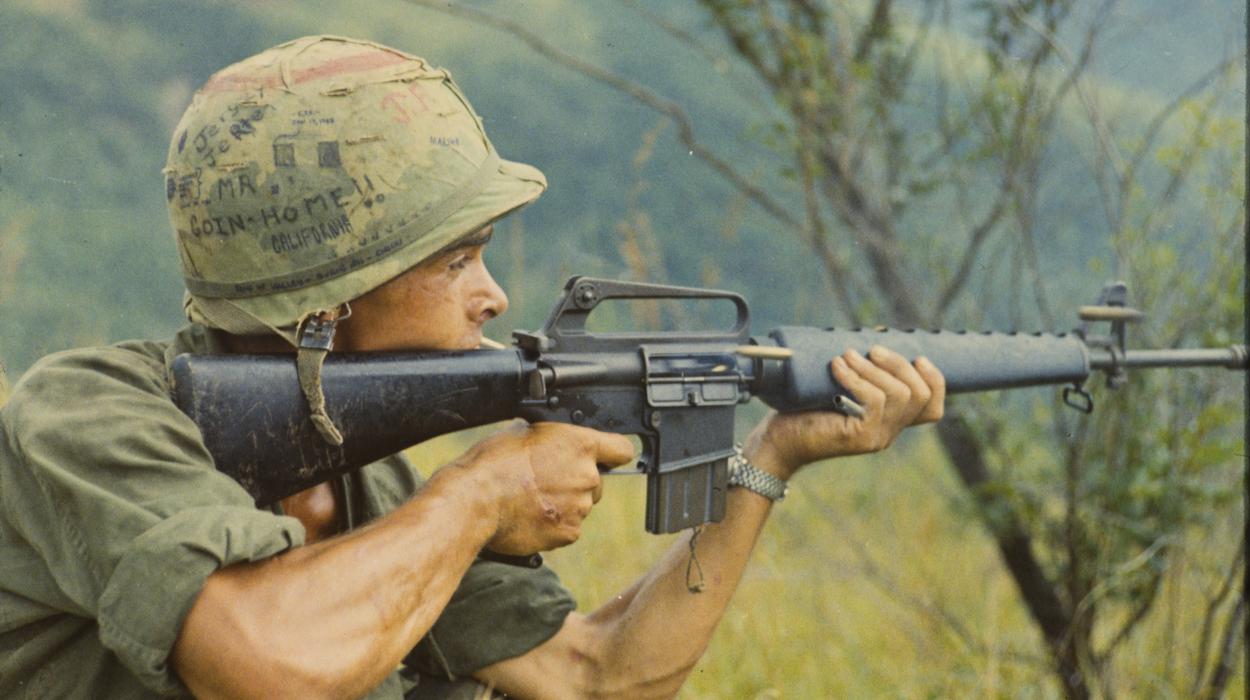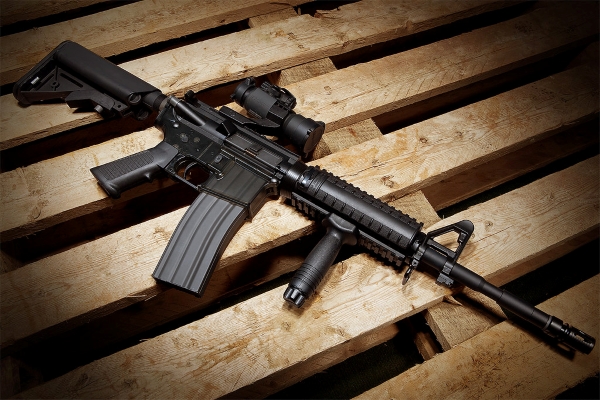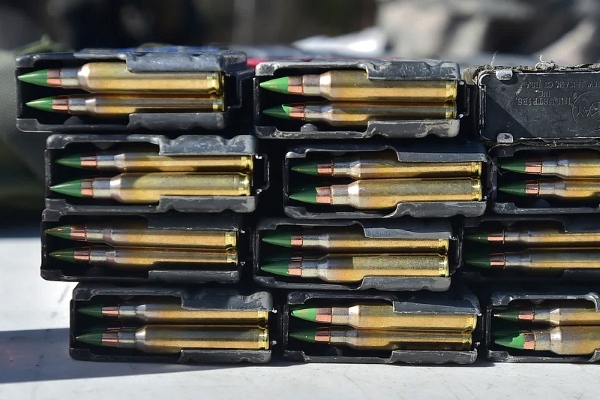Few rifles spark as much debate—or admiration—as the M16. To anti-gunners, the name itself has become shorthand for so-called “weapons of war.” But here’s the truth: the original AR-15 was a civilian, semi-automatic rifle before the military ever adopted it as the M16. What the armed forces carried into the jungles of Vietnam and across the sands of the Middle East was a select-fire version of a rifle born in the civilian market.
For shooters today, retro M16 rifles represent more than just nostalgia. They’re a way to reclaim that history, to hold in your hands the rifle that defined generations of American service, faithfully recreated in semi-automatic form, and fully legal for modern gun owners. But, to me, owning one isn’t about stashing another toy in the safe. It’s about connecting with the roots of the American fighting rifle, and preserving that legacy in the face of those who want to erase it.
At the National Association for Gun Rights, we believe the right to keep and bear arms includes defending not only the rifles of tomorrow but also the heritage platforms that shaped our culture and our freedoms. Retro M16s are the perfect bridge between the civilian AR-15’s origins and the service rifles that became an icon of American firepower.
What Are Retro M16 Rifles? Understanding the Basics
A retro M16 is essentially a civilian-legal semi-automatic reproduction of a military-issued M16. Unlike original select-fire rifles regulated under the National Firearms Act, these reproductions are built as semi-automatic AR-15s that mirror the appearance, feel, and handling of their historic counterparts.
That means you can own a faithful M16A1 or XM177 clone without needing an NFA tax stamp or the headache of dealing with restricted items, so long as they are rifle-length. The result? A rifle that looks, balances, and shoots just like the service rifles carried by American troops, while remaining fully compliant under federal law.
Popular Retro M16 Variants and Their Features
M16A1
The A1 is the rifle most associated with Vietnam-era troops. Featuring a lightweight 20-inch pencil barrel, triangular handguards, and fixed carry handle, it captures the look of the late 1960s. Collectors love it for its historical accuracy, and shooters appreciate how light and handy it feels for a full-length rifle.
M16A2
By the 1980s, the A2 replaced the A1, bringing a heavier barrel, round handguards, and improved rear sights. For shooters who want the Cold War-era look and sturdier build, the A2 hits the sweet spot. Its design also appeals to those who appreciate the practical refinements that shaped modern AR-15s.
XM177E2 (CAR-15)
The carbine variant, with its short barrel and collapsible stock, saw service with special operations troops. For collectors, it’s one of the coolest-looking retro builds, offering compact handling and serious Vietnam-era character. While today’s AR pistols and carbines may outperform it in modern features, nothing beats the authenticity and nostalgia of an XM177 clone.
Building vs. Buying: Two Paths to Your Retro M16
For the die-hard enthusiast, there are two main ways to get your hands on a retro M16: build it from sourced parts or buy a replica straight from a manufacturer. Each approach has its own advantages, and your choice depends on how deep into the retro rabbit hole you want to go.
Building from Parts
One of the appeals of the AR-15 platform has always been its modularity, and retro rifles are no exception. Many collectors enjoy hunting down authentic surplus parts—triangle handguards, fixed carry handles, teardrop forward assists, and even period-correct furniture. Companies like Harrington & Richardson built a reputation on producing receivers with historically accurate markings and dimensions, making them a go-to for retro builds. Brownells also sells a wide variety of reproduction components for DIY builders, from barrels to stocks.
The appeal of a parts build is total control. Every pin, every marking, every accessory can be dialed in to reflect the exact period you’re chasing. But it’s not quick or cheap. Personally, I just wrapped up an MK18 Mod 0 build that used nothing but GWOT-era surplus parts. It took me almost eight months of scouring forums, shows, and classified boards to track everything down at a fair price. The rifle is built on a Colt Government rolled lower and surplus Colt Upper with a Knights Armament M4 RAS, LMT stock and rear sight, a vintage SureFire M951 “Fat Body” light, and even a surplus Aimpoint M68 CCO. The process was slow, expensive, and sometimes frustrating—but when I finally snapped it together, I had a rifle that wasn’t just “retro inspired.” It was a time machine, built with the exact parts our guys carried overseas.
Buying a Replica
For those who want to skip the scavenger hunt and go straight to a rifle that’s ready out of the box, replica builders are the answer. Palmetto State Armory (PSA) has recently entered the retro market, producing its own faithful reproductions at budget-friendly price points. They join established names like Harrington & Richardson, who specialize in accurate Vietnam-era clones, and Brownells, whose Retro line has become a standard for shooters who want factory-built authenticity.
Buying a factory replica means you’re getting a rifle that’s professionally assembled, tested for reliability, and often backed by a manufacturer’s warranty. For many shooters, that peace of mind makes the investment worthwhile.
Which Route is Right for You?
If you’re the type of gun nut who loves tracking down obscure parts and spending weekends at the bench piecing together history, building a retro rifle is as rewarding as it gets. But if you’d rather spend your time at the range than chasing down a teardrop forward assist from an overpriced seller on GunBroker, a replica from PSA, H&R, or Brownells will give you the satisfaction of owning a historically correct rifle with none of the hassle.
Benefits of Owning a Retro M16 Rifle
For enthusiasts, the appeal goes far beyond the range. Retro M16s carry collector value, historical significance, and the satisfaction of holding a rifle that connects directly to America’s military legacy. These reproductions are built with incredible attention to detail, meaning you’re not just buying a look-alike; you’re purchasing a carefully engineered tribute to the rifles that defended freedom across the globe.
And when you take one to the range, you’re experiencing more than just another AR platform. You’re stepping into the boots of the soldiers who shouldered these rifles decades ago. It’s a tactile history lesson with every shot fired.
Quality and Craftsmanship in Modern Retro M16s
Manufacturers like Harrington & Richardson and Brownells have earned respect among collectors because of their dedication to authenticity. From roll marks that match the originals to correct-style furniture, these rifles are as close as you’ll get to owning a piece of military surplus.
But make no mistake: these aren’t fragile museum pieces. Today’s retro builds use modern metallurgy, machining, and QC standards that far exceed 1960s-era production. That means you’re getting a rifle that’s both historically accurate and rock-solid reliable.
Legal Considerations for Retro M16 Ownership
Despite the “M16” name, these rifles are not machine guns. They are semi-automatic AR-15 style rifles, treated under federal law just like any other AR. As always, gun owners need to be aware of their state laws—some states impose restrictions on AR-15s regardless of configuration.
NAGR strongly encourages gun owners to know their rights and stay up to date on current federal and local laws. The ATF has made a career out of muddying the waters with confusing regulations, but when you purchase from a reputable manufacturer, your retro M16 clone is 100% legal.
How to Choose the Right Retro M16 for Your Needs
Before you buy, ask yourself what matters most. Do you want Vietnam-era authenticity? Go with an M16A1. Prefer the rugged refinements of the Cold War? The A2 is your rifle. Want something compact and flashy? The XM177E2 is hard to beat.
Budget also plays a role. Entry-level reproductions can give you the retro look without breaking the bank, while premium models deliver period-correct details down to the smallest roll pin. Whenever possible, handle different models in person to see which variant feels right in your hands.
Evaluating Manufacturers and Models
The most trusted names in the retro game are Harrington & Richardson, Brownells, and FN America. Each offers different strengths, from H&R’s faithful A1 reproductions to Brownells’ wide lineup of retro builds. Look for details like correct furniture, proper barrel profiles, and authentic markings when evaluating a rifle. If something looks “off,” it probably is—don’t waste your money on cheap knockoffs.
Top Retro M16 Options on the Market
Currently, some of the most respected models include H&R’s M16A1 reproductions, Brownells’ XM177E2, and various A2-style builds from reputable makers. Prices range from around $1,200 for entry-level clones to well over $2,000 for premium, highly accurate reproductions.
Whether you’re in it for the nostalgia or the range experience, there’s a retro M16 out there that fits your budget and appetite for authenticity.
Setting Up and Maintaining Your Retro M16
Part of the fun is accessorizing with period-correct gear—slings, retro optics, or even reproduction cleaning kits. Modern optics and attachments can fit on these rifles, but every Magpul accessory you bolt on takes away a little of the rifle’s soul. Maintenance is the same as any AR: clean your rifle, keep it lubed, and don’t let it sit neglected. Treat it right, and it’ll last you a lifetime.
Frequently Asked Questions
Are retro M16 rifles as reliable as modern AR-15s?
Yes. When built by a reputable manufacturer (or even built at home), retro rifles use modern materials and machining that often exceed the reliability of standard ARs.
Can I use modern accessories on a retro M16?
You can—but it may spoil the classic look. Most modern accessories are compatible, but purists usually stick to period-correct setups.
What’s the difference between an M16A1 and M16A2 clone?
The A1 is lighter, simpler, and Vietnam-era correct. The A2 is heavier, sturdier, and built with refinements from the 1980s. Both have their appeal.
Do I need special permits to own a retro M16?
No. Retro M16s are semi-automatic rifles, not NFA-regulated machine guns. State laws may vary, so always check your local regulations.
Final Thoughts: Choose Your Piece of History
The M16 isn’t just a rifle—it’s a symbol of American grit, innovation, and freedom. Retro reproductions give today’s gun owners a way to preserve that history while enjoying the unmatched shooting experience these rifles provide. Whether you choose the lightweight A1, the refined A2, or the compact XM177, you’re buying more than a firearm; you’re buying a piece of our nation’s story.
And as always, remember: the Second Amendment protects your right to own these rifles, and organizations like the National Association for Gun Rights will never stop fighting to defend that freedom.
About the Author
Taylor Rhodes is the Director of Communications at the National Association for Gun Rights. A seasoned political strategist and unapologetic defender of the Second Amendment, Taylor has led high-impact campaigns at both the state and national levels. He lives in Hoover, Alabama, with his wife, Madison, and enjoys bourbon, golf, and collecting firearms—especially his 12.5” Geissele Super Duty.




